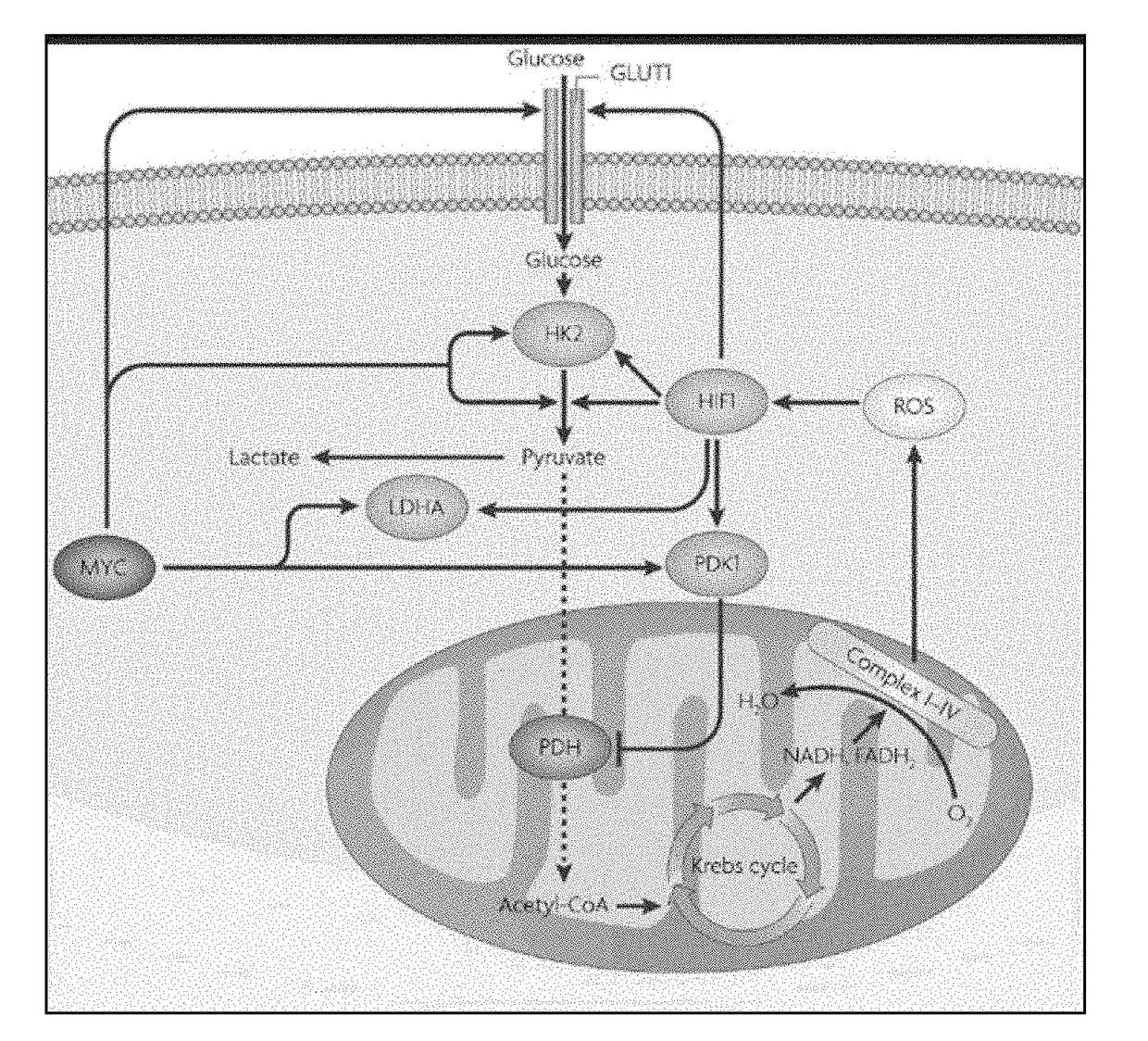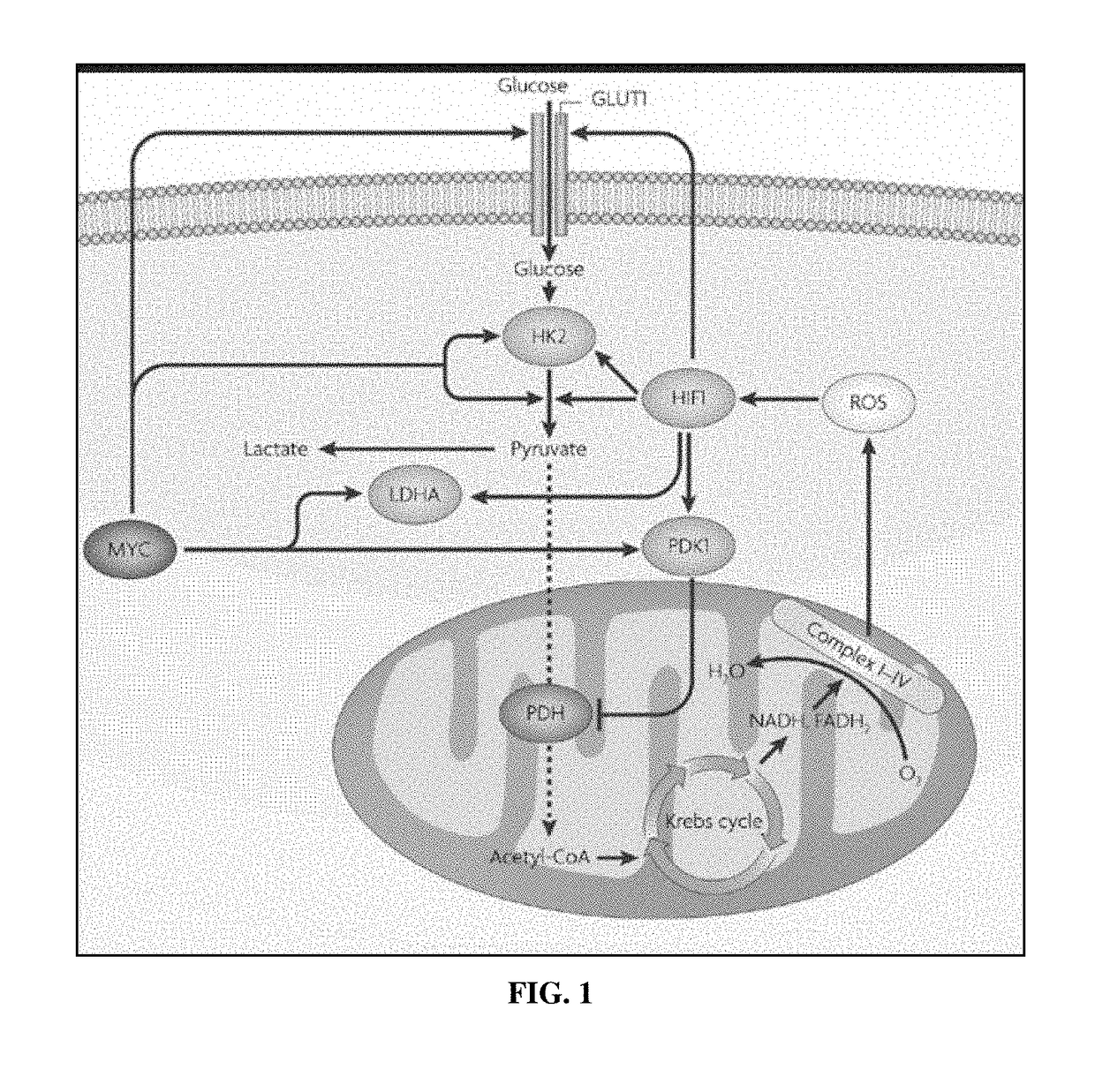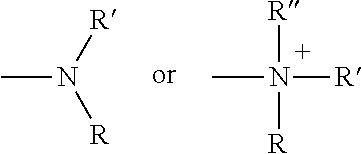Modifications of therapeutic agents for enhanced delivery to target sites
- Summary
- Abstract
- Description
- Claims
- Application Information
AI Technical Summary
Benefits of technology
Problems solved by technology
Method used
Image
Examples
example 1
and Stability of β-alanyl DCA (ADCA)
[0425]Synthesis from DCA
[0426]β-alanine (2 g, 22 mmol) and NaHCO3 (4.6 g, 55 mmol) were suspended in water / THF mixture (2:1, 30 mL) and DCA chloride (2 mL, 24.2 mmol) in THF (20 mL) was added to the mixture dropwise at 0° C. The solution was stirred for 2 hr at RT, diluted to 100 mL with NaHCO3 and washed with ether 3×50 mL. The aqueous layer was acidified with 1 M HCl to pH 2 and extracted with DCM 5×50 mL. The organic fraction was dried over MgSO4 and concentrated. The residue was precipitated into hexanes, to give the product as white powder (99% pure, small amount of DCA as an impurity). Yield: 84 mg (2%). The synthesis route of β-alanyl DCA is shown below.
[0427]Synthesis from DCA Anhydride
[0428]ADCA can also be prepared using alternative method such as the following: β-alanine (2 g, 22 mmol) was suspended in DCM (30 mL) and DCA anhydride (4 mL, 26.4 mmol) was added to the mixture. The solution stirred for three days and the solvent was evapor...
example 2
of TPP-Tris-β-alanino-DCA (Mito-ADCA)
[0432]Synthesis of TPP-Tris-β-alanino-DCA (Mito-ADCA)
[0433]MitoADCA was prepared in two steps. The synthesis route of TPP-Tris-β-alanino-DCA is shown below in Scheme VIII.
[0434]TPP-tris-OH was reacted with Boc protected beta-alanine using EDC, DMAP reagents in DMF solvent. DMF was removed and the product was purified by column chromatography.
[0435]To the solution of BOC protected compound in DCM, excess TFA was added, stirred 30 min to remove the BOC group. After concentration, this residue was dissolved in DCM, and Pyridine was added. To this mixture, DCA anhydride was added drop-wise, and the mixture was stirred for 30 min. The solution was washed with 0.1% H2SO4-Brine, and dried over MgSO4. After concentration, the residue was purified by column chromatography. HPLC analysis of the resultant compound showed 2 peaks. From mass and NMR analysis it was concluded that the second product is a molecule similar to Mito-ADCA, where one of DCA was repl...
example 3
of TPP-alanino-DCA (TPP-ADCA)
[0441]The solution of 4-bromobutyltriphenylphosphonium bromide and sodium azide in the mixture of ethanol (“EtOH”) and water was stirred under reflux for overnight. The solvent was evaporated and residue was dissolved in DCM-EtOH (9:1) and filtered with filter paper. The filtrate was concentrated to give a desired compound (99% Yield). The product was confirmed by NMR.
[0442]The solution of TPP-butyl azide and triphenylphosphine in the mixture of THF / MeOH / H2O was stirred at 70° C. for 1 h. The mixture was concentrated and the resulting residue was dissolved in DCM. The compound was extracted with 0.2M HCl and water fraction was washed with DCM. The water fraction was lyophilized to give a desired compound (97% Yield). The product (TPP-butyl-amine-HCl) was confirmed by NMR. The synthesis route of TPP-butyl-amine-HCl is shown below in Scheme X.
[0443]To the solution of TPP-amine hydrochloride and pyridine in DCM, dichloroacetic anhydride (DCA2O) was added dr...
PUM
| Property | Measurement | Unit |
|---|---|---|
| Size | aaaaa | aaaaa |
| Size | aaaaa | aaaaa |
| Size | aaaaa | aaaaa |
Abstract
Description
Claims
Application Information
 Login to View More
Login to View More - R&D
- Intellectual Property
- Life Sciences
- Materials
- Tech Scout
- Unparalleled Data Quality
- Higher Quality Content
- 60% Fewer Hallucinations
Browse by: Latest US Patents, China's latest patents, Technical Efficacy Thesaurus, Application Domain, Technology Topic, Popular Technical Reports.
© 2025 PatSnap. All rights reserved.Legal|Privacy policy|Modern Slavery Act Transparency Statement|Sitemap|About US| Contact US: help@patsnap.com



